Minds That Matter: Women Of Lore
The art of projecting an image or conveying character in any professional or artistic field can be demanding for a seasoned individual, let alone a novice. Most people have had a front row seat to the great performers during childhood by viewing television or theater or by reading classic literature. Then, there are those who developed their craft through the tried and true method of apprenticeship that build those skills alongside a mentor. On a more inconceivable level, there are those who seem to be wholeheartedly in tune with their innate ability by independently bringing out their extraordinary vision for all to relish, in any given medium. There is no end to the person that starts life as an unknown and through seemingly casual and routine perseverance, casts a self-defining role that touches countless lives and leaves a lasting legacy to their talent.
In Justice
In 2008, Sonia Sotomayor was recognized as one of the “75 Most Influential People of the 21st Century” by Esquire magazine. A book highlighting her life in the Bronx community, the starting point of her rise to prominence, made the New York Times Bestseller List. In January 2013, My Beloved World retraced the early portion of her life and was simultaneously published in Spanish. In the autobiography, she reflects, “I think it’s important to move people beyond just dreaming and into doing.”
This segment begins with the example of a prominent public figure in order to indicate the various elements of life that form the novel, not just any novel, but a novel par excellence. Also, the manner by which the novel inspires the reader to reach their potential and to rise above life’s obstacles. In this way, the Nancy Drew mystery odyssey proved to be the role model that many young girls yearned to emulate as they searched for diversion, deeper meaning, and fuller vision in life. In particular, U.S. Supreme Court Justice Sandra Day O’Connor, former Secretary of State Hillary Rodham Clinton, and former First Lady Laura Bush recognize Nancy Drew among the seminal figures in their early childhood years. Among those dignitaries, Sandra Day O’Connor who has since retired, was the first woman appointed to the U.S. Supreme Court.

Sonia Sotomayor overcame typical hurdles during her youth. She was born on June 25, 1954 to parents of Puerto Rican descent. Their first home was a tenement building located in the South Bronx, after which they settled into a housing project in neighboring East Bronx. First, her father lacked an education and made a living by working for a tool company. His inability to speak English preceded problems with drinking. Juan Sotomayor died of heart complications at age 42. In his absence, the grandmother dutifully provided for the prime necessities of protection and purpose in a volatile and precarious household. At age 9, Sonia Sotomayor was diagnosed with a chronic health condition that was to follow her into adulthood, all indications being that it was kept remarkably under control, despite a long history of over-performing.
In contrast to her husband, Celina Sotomayor received military training upon entering adulthood, later supporting her family as a nurse and may well have inspired her daughter’s career decision by buying her an Encyclopedia Britannica. Even so, Celina Sotomayor was emotionally distant in mothering through most of her daughter’s maturing years, perhaps due to her early life as an orphan. The lack of proper parental structure was most likely influential in instilling an early inclination for inquisitive prose and courtroom protocol, as indicated by her interest in the Nancy Drew book collection and the Perry Mason television series. To their credit, American curators Carole Kismaric and Marvin Heiferman have contextualized this formative effect as follows:
Nancy Drew bears a special responsibility: she stakes out new territory by showing girls how to take action, how to set their sights beyond what convention expects of them. Nancy was, and remains, an original in kids’ literature; she still teaches girls that it’s OK to be smarter than anyone else around, that success is the appropriate reward for being an independent, curious risk-taker who knows when to persevere and when to ask for help. Nancy, always open to life’s mysteries, invites her readers to seek nothing less for themselves.
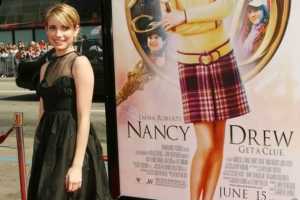
Sonia Sotomayor married Kevin Noonan in 1976 after graduating from Princeton University, culminating a relationship that began in high school. The nuptial vows were exchanged in a ceremony at St. Patrick’s Cathedral in New York City. By most accounts, she was considered a diligent student, graduating valedictorian of her class at Cardinal Spellman High School in Bronx, New York. At Princeton University and Yale University, she spent additional time compensating for gaps in knowledge by augmenting her studies with the unwavering support of professors and preempting coursework during the summer recess. This is the type of reputation that propelled her through high school and into two scholarships, one at Princeton where she completed a history degree with distinction and another at Yale where she earned a law degree. When she was not belaboring the textbooks, perusing lecture notes or consulting the largess of her contemporary pundits, she advocated for the hiring of Hispanic professors and administrators in order to adequately address the changing tide of student demographics. The senior thesis she submitted was extensive but revealed an intellectually mature assessment of the political and economic development of Puerto Rico; a place she continues to revisit. Before launching into a career in public and private service, Sonia Sotomayor held teaching posts at New York University and Columbia University.
The burden carried by her father’s living ordeal and subsequent passing, marked the first obstacle facing her family as a child. During the late 1970s and through most of the 1980s, the crime rate in New York City buckled the judicial system in the region. Being a newly minted attorney, Sonia Sotomayor encountered the gamut of social evils; shoplifting, prostitution, illicit drugs, murder, counterfeiting, notwithstanding police brutality. This time she advocated not for the dearth of Hispanics in higher education, but rather, the violence perpetrated by Hispanics against Hispanics in the streets. Her reputation gained momentum once more as she proved her stature as a litigator with an uncanny ability to expound the complex legal ramifications of the case in a demeanor described as comprehensive and palpable.
Her unrelenting determination to uphold the ideals of her upbringing and her education, paved the way for a series of career directions that would illuminate her ascendancy to the Supreme Court as the first Hispanic and third woman elected to the panel of distinguished justices. To start, a nomination to Federal District Judge in U.S. District Court for the Southern District of New York, as recognized by President George H. W. Bush. Followed by, a nomination to Court of Appeals Judge in U.S. Court of Appeals for the Second Circuit, underscored by President Bill Clinton.
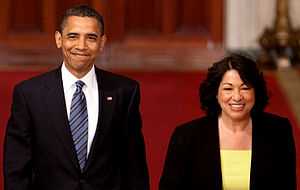
Sonia Sotomayor does not discount the drudgery that is the hallmark of a legal career, particularly one commandeered with such overbearing personal aspirations. Her drive has undoubtedly led to the nomination of U. S. Supreme Court Judge, an honor cast upon by President Barak Obama. This fortuitousness may have contributed to the 1983 divorce with husband Kevin Noonan, but as she adamantly points out, it was not the overriding factor. They did not raise any children together, owing in part to the claims of near death experiences wrought about by persistent illness. Consequently, Sonia Sotomayor shares her steadfast admiration for the New York Yankees with her nephew and godson. The Bronx housing complex, where her family resided decades ago, has been renamed in her honor. In yet another solemn gesture, a public high school in Los Angeles, California bears her name, standing as a beacon for generations to ponder.
The once unassuming individual who struggled to outperform in college, now counts honorary degrees from a bevy of universities—starting in 1999 through 2013—Lehman College, Princeton University, Brooklyn Law School, Pace University School of Law, Hofstra University, Northeastern University School of Law, Howard University, St. Lawrence University, New York University, Yale University, and the University of Puerto Rico. Sonia Sotomayor complements her official itinerary with speaking events focusing on prevalent social issues as a departure, if slight, from the demands of promulgating justice. That agenda covers a modest range of concerns, most notably, ethnicity and gender.
In Spirit
As a significant contribution to publishing, Helen Keller composed two novels that have been acknowledged by British Neurologist, Dr. Oliver Sacks, for their irrepressible exploration of the human consciousness in the unique experience of living with a double limitation. Her text, The World I Live In, has given unbridled insight into the human mind; whilst, The Story Of My Life is considered to be a classic of American Literature and autobiography. When it was published in 1903, the manuscript opened to critical acclaim. Its commercial success is underscored by the fact that it has been released in various editions since the initial printing, translated into 50 European and Asian languages while retaining universal prominence. Among the many treasures found within the pages of the novel is a poem written by a blind man. Through the poem, Keller relates primarily to the ocular depth that enables the author to imagine his life in a way that permits him to capture the feeling in words to the delight of the unsuspecting audience. Keller describes this accomplishment further.
I am glad my friend Mr. Stedman knew that poem while he was making his Anthology, for knowing it, so fine a poet and critic could not fail to give it a place in his treasure−house of American poetry. The poet, Mr. Clarence Hawkes, has been blind since childhood; yet he finds in nature hints of combinations for his mental pictures. Out of the knowledge and impressions that come to him he constructs a masterpiece which hangs upon the walls of his thought. And into the poet’s house come all the true spirits of the world.
THE MOUNTAIN TO THE PINE
Thou tall, majestic monarch of the wood,
That standest where no wild vines dare to creep,
Men call thee old, and say that thou hast stood
A century upon my rugged steep;
Yet unto me thy life is but a day,
When I recall the things that I have seen,—
The forest monarchs that have passed away
Upon the spot where first I saw thy green;
For I am older than the age of man,
Or all the living things that crawl or creep,
Or birds of air, or creatures of the deep;
I was the first dim outline of God’s plan:
Only the waters of the restless sea
And the infinite stars in heaven are old to me.
This point in the matter proceeds by providing an alternative path to aspiring authors, even to those inwardly or outwardly impaired, as exemplified by Keller’s hardship. It is best indicated by Keller, “In a word, literature is my Utopia. Here I am not disenfranchised.”
In the field of education, Helen Keller personified the indomitable force of the human spirit to overcome hurdles despite adversity. Helen Keller graduated from college in 1904. While that may not seem altogether unusual, in her case it was an accomplishment to marvel considering she was blind and deaf since early childhood. Only two years after her birth on June 27, 1880, Helen Keller was left in complete darkness and silence following an illness that left her without hearing nor sight. How much more tragic that would have been had she not talked at six months and walked unaided at twelve months, is ever more unsettling.
Her parents were fortunate enough to support the family, which included another sister and two stepbrothers, from their cotton plantation in Tuscumbia, Alabama. Her father, Arthur H. Keller, served as a Confederate Army captain during the Civil War and eventually as editor of the local newspaper, North Alabamian.
Being institutionalized would seem the only rational option, except that even at this point in life, Helen Keller was clever enough to befriend the daughter of the family cook. Together they developed a rudimentary form of sign language that carried them through playtime together.
For this reason, along with the efforts of many people that would enter her life; notwithstanding, her mother Katherine Adams Keller, a series of events led to the encounter with Anne Sullivan. A longstanding mentoring relationship began that would last nearly 50 years between teacher and pupil. Anne Sullivan was an educator at the Perkins Institute for the Blind in Boston, Massachusetts. Her arduous responsibility began by increasing the pupil’s vocabulary through a process of spelling words by pressing sign language letters onto one hand while placing the corresponding object in the other hand, repeatedly; until the connection between hand impressions and object were inextricably fused in the mind of the pupil.
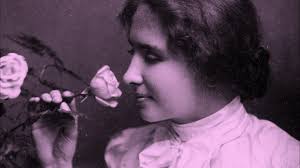
At the age of 24, Helen Keller graduated top in her class at Radcliffe College, considered to be the “Harvard Annex” strictly for the teaching of female students by Harvard faculty in 1879. She accomplished this by mastering the communication techniques of finger spelling, touch-lip reading, and Braille. In public speaking, Helen Keller lectured with the assistance of an interpreter, allowing her to acquire an affinity as an advocate for the disabled or the marginalized, both nationally and internationally. On that path to public advocacy, Helen Keller met notable figures: inventor Alexander Graham Bell, author Mark Twain, and Standard Oil executive Henry H. Rodgers; as well as, American industrialists Andrew Carnegie, John D. Rockefeller, and Henry Ford. Also, her scholarly contributions were recognized with a Distinguished Service Medal in 1936 by President Theodore Roosevelt. Her social circles were not limited to Roosevelt, however; and subsequently garnered the admiration of the presidential administrations of Grover Cleveland through Lyndon B. Johnson. Equally impressive, was earning a Presidential Medal of Freedom in 1964 which preceded her election to the Women’s Hall of Fame in 1965.
A distinguished list of academic institutions recognized her lifelong humanitarian effort with honorary degrees. They include: Temple University, Harvard University; the universities of Glasgow, Scotland (named Honorary Fellow of the Educational Institute of Scotland); from Berlin, Germany; in Delhi, India; and the Witwatersrand of Johannesburg, South Africa, to name just a fraction of her emblematic career highlights.
Helen Keller endured several debilitating strokes in 1961, finally passing away in her sleep on June 1, 1968. Though, only after a lifetime of personal, academic, and professional achievement; and by the support of a cadre of intellectuals. Her enduring legacy is scored onto the Alabama state quarter, having the distinct honor of being the only U.S. coin in circulation to feature Braille etching.
In Science
Over the years, various aspects of Marie Curie’s life have been retold in books, including a 1937 version written by her daughter Ève Curie . In Madame Curie : A Biography, Ève resonates her mother’s wisdom, “I am one of those who think like Nobel, that humanity will draw more good than evil from new discoveries.” Undoubtedly, Ève was moved to write the novel to capture her mother’s defining role as an unusual contributor in the male dominated field of science. Aside from that, Marie Curie’s struggle with her own vulnerabilities as well as those of her adopted French community, provided the resiliency that permeated into her offspring’s generation. It is by no means less important that Marie Curie’s international travels instilled a great dedication toward self-determination among her children, and even her granddaughter, physicist Helene Joliot-Curie. The most recent compilation, Obsessive Genius: The Inner World of Marie Curie, was authored by Barbara Goldsmith in 2005. It is another testimonial to the introvert the daughters knew better than most and how that mother’s shyness fueled their own urgency to succeed.
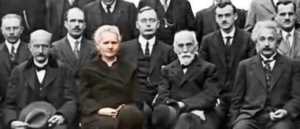
It all started when Marie Curie (née Maria Salomea Sklodowska) was born November 7, 1867 in Warsaw, Poland to a mother who was employed as a secondary-school teacher. First moving to Krakow, Poland then to Paris, France in 1891 where she met and subsequently married Pierre Curie.
Soon thereafter, Curie was credited with discovering and developing the elements of Polonium and Radium. The Polonium she discovered was named after her country of origin. The Radium she studied was important, in that, it proved essential for patient therapy in the field of medicine, particularly cancer treatment.
Curie completed a doctor degree in 1903 at the Sorbonne, the second oldest university in the world. Not surprisingly, her contribution to science was recognized with a Nobel Prize for Physics that same year and a second Nobel Prize for Chemistry in 1911. Curie concurrently holds the unique distinction of being the first woman recipient of the prestigious award that was established by the Swedish inventor Alfred Nobel for recognition of significant contribution in science, literature, and peace.
In support, President Harding honored her achievement in 1921 by donating $50,000 to the Curie Laboratory where the experiments were conducted. Following in 1929, President Hoover provided Curie with a gram of Radium in gratitude for her dedication to exploration in the field of science. In regard to her talent, Albert Einstein remarked, “Not only did she do outstanding work in her lifetime, and not only did she help humanity greatly by her work, but she invested all her work with the highest moral quality. All of this she accomplished with great strength, objectivity, and judgment. It is very rare to find all of these qualities in one individual.”
Marie Curie passed away in France on 1934 after succumbing to illness. Sadly enough, Pierre Curie died several years before his wife. Their combined effort is equally admired and serves as a testament for the ages.
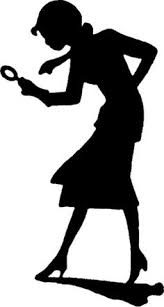
This examination of lives that led to novels and film concludes by revealing, through the personal lives of three women, the way a notable figure is embedded into a biography. It does so by sorting the details, recalling: family, birth and death, education, travel, employment, distinction, so on, so forth; into a cohesive, coherent, cogent, and palatable arrangement of story line. Altogether, these biographies are equally admired for their illustration of the subtle points pertaining to the mystery of language, cultural boundaries, and innovative science. If nothing else, the passion embodied by these women have undoubtedly formed the basis for the monolithic texts left behind by their steadfast struggle and sacrifice, at every social level. In all, people that earn distinctive medals, make discoveries, and personify leadership are prime material for the next ubiquitous novel.
What do you think? Leave a comment.











A few years back I have watched a short part of an old film about Helen Keller, it was probably The Miracle Worker. She was an utterly obnoxious little girl! I’ve been meaning to read about Keller’s life for a long time and this article has set me on my way.
I listened to Sotomayor’s book with my husband over the course of several long drives. The book opens a window in to the life of Puerto Rican neighborhoods in New York that I have only walked through but never infiltrated in the way that Sotomayor allows the reader to do.
Spoiler alert: she makes it all the way to the Supreme Court!
What a remarkable, compassionate, and wise woman.
If you like memoirs about people who have succeeded in spite of uncommon obstacles, this one is worth your time. Sonia Sotomayor for President! Every woman and man in America and the world should read it.
Extraordinary women.
Superb article and great to see this go live! I’ve been looking forward to reading it.
Marie Curie was a complex and determined woman who gave much of her life to science but also had a satisfying life as a wife, mother, daughter and sister. A truly great and good human being.
Thank you for this article. Maybe it sounds silly to say, but I felt a real connection with Sotomayor, given that she spent her childhood in one of the neighborhoods (the South Bronx) I teach in, and I can almost imagine her as a child in my classroom.
If they made superhero action figures of these women, I would buy them.
My wife and I named our daughter, who was born in 2009, after Justice Sotomayor. We did this because it was important to us to have our daughter’s name reflect the Puerto Rican history on my side of the family, and because my wife wanted her to have a beautiful name that reflected wisdom.
Keller was an incredible woman, very bright and loving despite the difficult hardships she faced.
I really enjoyed reading articles and stories of dedicated, ambitious woman.
Curie was ahead of her time as a female in the field of science.
Mark Twain once said that the two most fascinating people of the 19th century were Napoleon and Helen Keller. I’ve yet to read anything on Napoleon but I can feel the fascination with Helen.
I can’t imagine a life without vision or sound, but Keller wrote with such elegance and vivid imagery. She makes me feel like anything is possible.
I will not describe Helen Keller as a disabled woman. On the contrary, she turned her “limitations” ( being deaf and blind) into privileges that enabled her to walk “serene and happy in the shadow cast by [her] deprivation.”
I read the biography in grade school when I was assigned Madame Curie for an “Important Historical Figures” type report. I remember falling in love with her life and reading the entire book in one afternoon (quite an accomplishment for an 8 year old who just needed the bare minimum info for a half-page report).
You inspired me to read it all over again.
Oh yeah. I loved the historical aspects of the story…the children learning Polish and the inspector coming and Manya having to recite all sorts of Russian because they weren’t supposed to use Polish, the portable xray stations in cars during WWI…so much that I didn’t know, and I love to learn.
Sonia has shown that persistance and perseverance will enable you to reach your goals.
Very inspired to read about Sotomayor.
I love biographies and I think it is great to see this article celebrating women. Very nicely written and your passion shines through.
I am in awe of how Helen Keller viewed the world – totally different from anyone else I’ve ever heard of.
Well-written article; I especially appreciate the section on Helen Keller. She paved the way for disability advocacy, for which I will always admire and appreciate her. It’s a shame that in her time, a woman with her limitations only received honorary degrees. But, you have to start somewhere.
Justice Sotomayor is absolutely amazing.
She is truly an impressive person, someone who has not let anything limit her horizons.
I loved Nancy Drew as a child as well. Great comparisons!! Really liked the overall message and writing style. Awesome job!
Wow a really interesting read – thanks for sharing this. 🙂
I haven’t heard of Nancy Drew in a while. Thanks for the reminder.